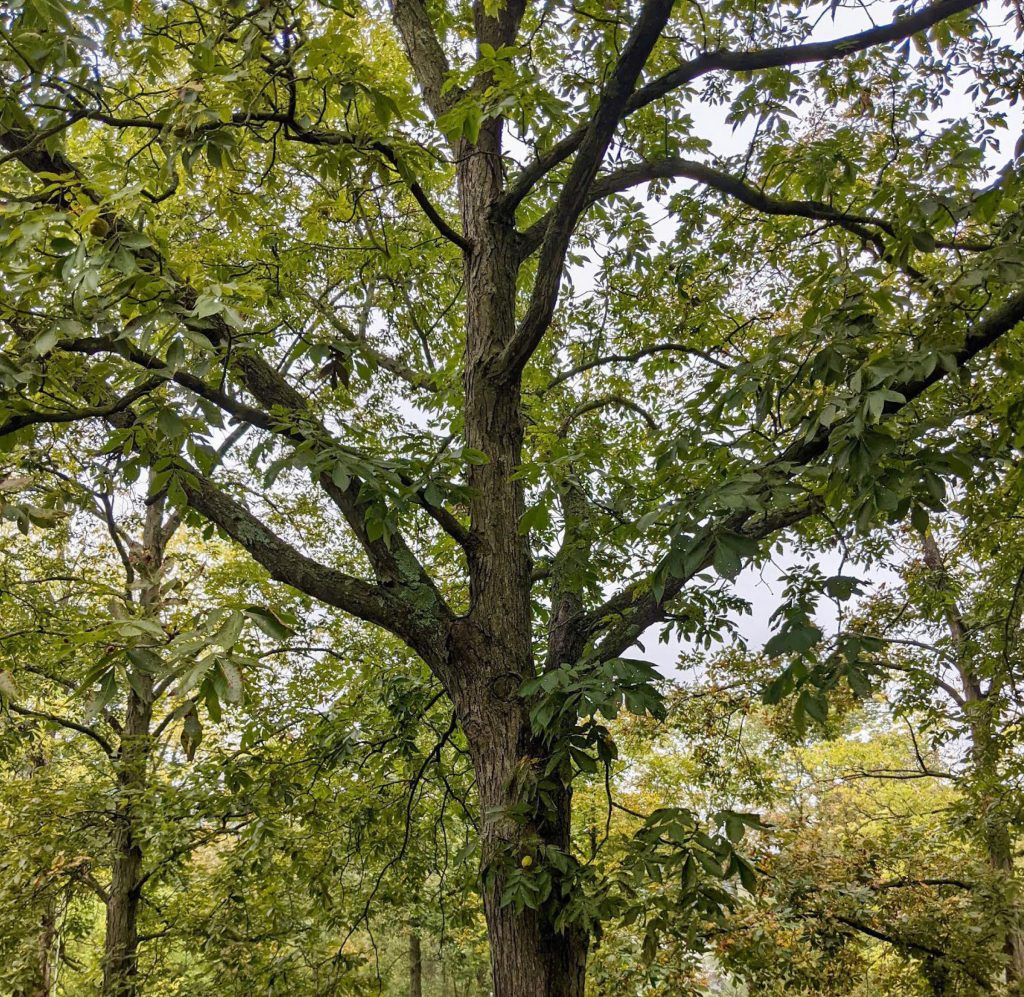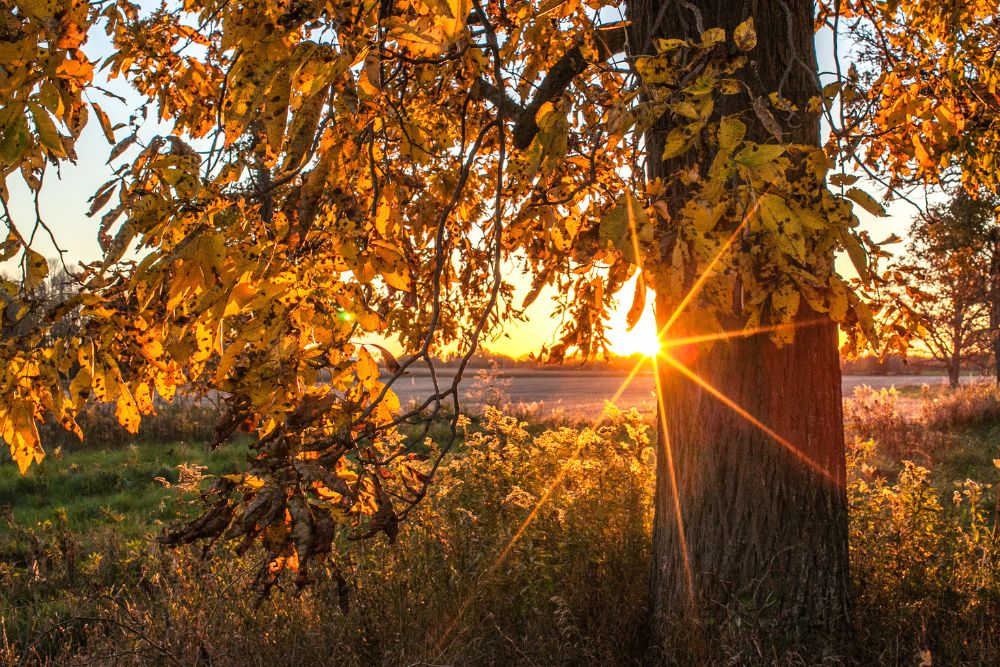Native Trees, Shrubs, Herbaceous Perennials – Shop Now, Farm Pickup
Native Trees, Shrubs, Herbaceous Perennials – Shop Now, Farm Pickup
|
Most Americans are familiar with the delicious, nutritious, and easy-to-crack nut of the Northern Pecan tree (Carya illinoinensis). It’s an integral part of our diet and the most common commercial native nut tree in the U.S.


But many people don’t realize it’s closely related to other native hickories, like the Shagbark and Shellbark. Hickories are at the foundation of wild food webs across the Eastern U.S. Alongside oaks, they form the most common forest type in the region, providing sustenance and habitat for hundreds of native species. Hickory nuts are high in fat and protein – an essential food source for many mammals – and its leaves support hundreds of butterfly and moth species.

You sure can! Hickory nuts can be enjoyed in many ways: raw, roasted, or ground into flour for baking. The traditional Cherokee preparation called kanuchi is made by mashing and cooking the nut meats and then added them to rice or hominy. Shagbark syrup is made by adding sugar to a tea made from hickory bark. Algonquin peoples make shagbark nut milk into a soup, called pawcohiccora (also the word from which hickory is derived). Hickories can also be used to make natural dyes, charcoal for smoking meats, and lumber.
Shagbark hickory (C. ovata), a large native tree with characteristic strips of bark, produces nuts that are particularly favored due to their decadent, maple-like flavor. Shellbark hickories (C. laciniosa) are particularly valued for their large nuts but are less common in nature today due to overharvesting and difficulty transplanting their large tap-root. They are also known as Kingnut hickory, a reference to the exceptional size of their nuts, ranging from 1.5-3” wide. Shellbark nuts have a flavor similar to Shagbark, often with a fruity and even banana-like taste. Its shell is often thicker than Shagbark, but cracks more easily.

Shagbark and Shellbark hickory are better-suited than Pecan for colder climates, and are favorites amongst nut enthusiasts and growers. Shagbark hickory can be found throughout the Northeast, while Shellbark has a smaller range mostly south of the Great Lakes. These trees can grow up to 120 feet tall, though average about 60-80 feet tall.

Nearly all named Hickory cultivars are likely the progeny of “wild” trees selected for superior characteristics by Indigenous peoples over hundreds of years. The legacy of this work can be found in the genetics of the trees that comprise today’s forests. They provide an excellent basis for continued breeding efforts.
The “Grainger” variety of Shagbark provides a good example of these selections. Typically, Shagbark nuts are small with hard shells, so it can be a challenge to extract the nut meat. Thin-shelled Grainger can grow to the size of a half dollar and cracks out in beautiful half-pieces (see below).

“Hicans” are hybrids between Shagbark or Shellbark and Pecan trees but don’t often produce many viable nuts. There is potential in hybridization, as these trees tend to produce nuts that are easier to crack than Shagbark or Shellbark and tend to be more cold-hardy than Pecans. There have also been significant breeding efforts towards growing cold-hardy Pecan cultivars that can ripen nuts up to Zone 5.
“Sometime in the first millennium A.D., the Indians who had burned undergrowth to facilitate grazing began systematically replanting larger belts of woodland, transforming them into orchards for fruit and mast (the general term for hickory nuts, beechnuts, acorns, butternuts, hazelnuts, pecans, walnuts, and chestnuts).”
Charles Mann, 1491: New Revelations of the Americas Before Columbus
During this time of rapid climate change, tree-based agriculture, or agroforestry, is essential to resilient and productive agricultural systems. While hickories are a relatively slow-growing nut option for the northeastern U.S. compared with chestnuts, hazelnuts, and walnuts, the development of a diversity of commercial nut orchards can be accelerated through hybridization and breeding. Species such as Shagbark and Shellbark hickory haven’t made it very far beyond the homes of nut enthusiasts. Further exploration of hickory forests in conjunction with breeding orchards and grower cooperatives could help to bring hickory nuts to more of our tables.
Indigenous land management practices focus on abundance and resilience outside of our cultivated agricultural lands and over many generations. These approaches teach us how we can better serve future generations, as our ancestors did for us. Take note of the big old hickories growing along old farm roads and imagine the farmers who chose to plant them for future generations. We too can plant for the future, for abundant wildlife, and for other uses which we may not benefit from directly. So, plant a hickory for the world to come.
